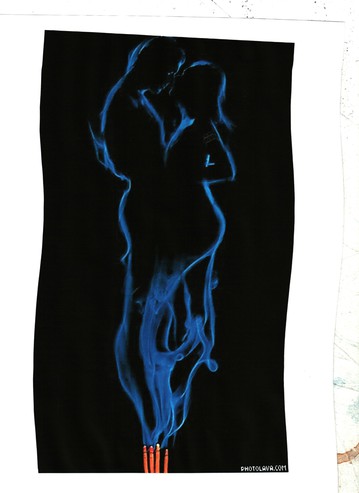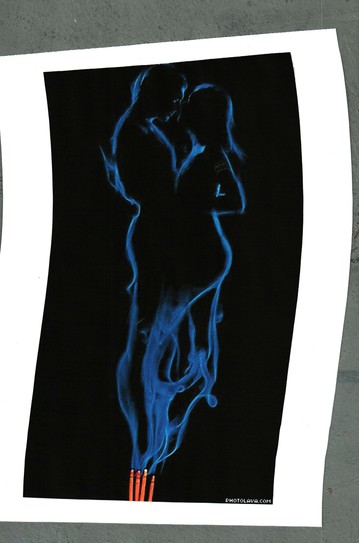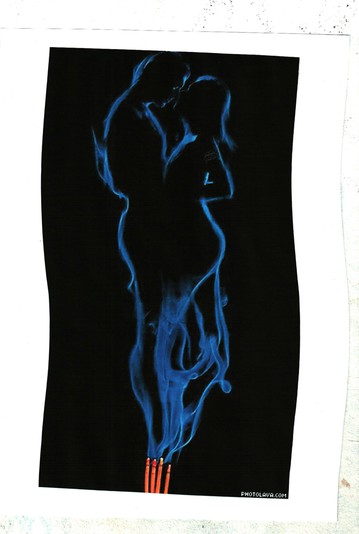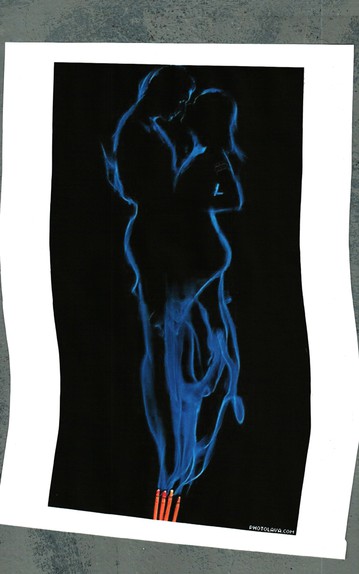Essay originally published in Dutch in nY #18, translated and completed with a series of JPGs for nY-web, by Robin Vanbesien.
(The ‘motto’ of this text is the opening shot of Pedro Costa’s film Ne Change Rien (2009). In one long take we see and hear actress and singer Jeanne Balibar performing the song Torture. Only at the end of the song and the take do we hear the applause of an off-screen audience. The applause comes as a total surprise, as nothing in the image had prepared us for it.)

On 15 February 2013, after entering Earth’s atmosphere, a meteor explodes in an air burst over Chelyabinsk. The explosion generates a bright flash, a large number of small fragmentary meteorites and a powerful shockwave. On that very same day, in the Beurs-Bourse pre-metro station in Brussels, while descending the stairs to the platform, I notice for the first time that, in the painting by Paul Delvaux, Nos vieux trams bruxellois (1978), which hangs above the stairway, the public road at the bottom of the picture is littered with fragments and rocks. In the symbolic imagery that Delvaux developed in his oeuvre, these specimens refer to the mysterious and infinite nature of the cosmic order. Now, what is the value of this incidental occurrence in which fragments of the Chelyabinsk meteorite transform into symbolically-charged cosmic rocks in a painting by Paul Delvaux? Perhaps, above all, this transformation mirrors the mode of production of an imaginary metamorphosis – that which materialises only in our thoughts.
(What if, for you too, this surprising link between these cosmic referents sparks off a flow of free associations where new relations continually arise and new compositions are formed? What if our thoughts constantly migrate, connecting the most varying elements with each other, so that we can no longer hold on to any singular form? What if these conversions do not ultimately cease and, in this way, infinitely suspend the power of any kind of representation?)

On the street, banks function as symbols of labour and prosperity, set up as advertisements that take up real space. A bank branch on the street is an exchange between reality and representation, a world and its model at a 1:1 scale. This is because these banks, in relation to surfaces and symbols, have for quite a while given way to objects that are compositions beyond the reach of the eye or hand. These compositions, we are told by specialists, are more complex and more prepared for this world than they initially seem to communicate.
(Here I am paraphrasing a text by the Lithuanian artist Gintaras Didžiapetris, published in the third issue of The Federal (2012). [1] The original text deserves reproduction, I believe, even in the form of a paraphrase. This sort of paraphrase is a composition covering an existing object and thus celebrating it, but also generating a new return.)
In the same issue of The Federal (as we continue leafing through it), the British artist Lucy Skaer formulates a proposal in which she focuses on the metamorphosis of gold bullion. [2] She seeks a person who keeps gold bullion in a bank vault and who would allow her to convert the gold into an artwork. She will ‘transform a quantity of gold bullion into pure gold objects, cast from common items’. Skaer doesn’t express any desire to possess or to remove objects from their location. On the contrary, the gold will be cast and left in situ, alongside the other gold bullion. What is changed in this process – off-screen – is the gold’s form; what is removed is the blankness of the bullion.
A throw of the dice is an acknowledgement that no number is alike. A metamorphosis of gold bullion is an acknowledgment that no form is alike, even when it doesn’t bear a number.
Originally, gold was praised for its usability, its beauty and its inert, undifferentiated nature. Now it has a value that is tied to an idea of value. [3] In our current monetary system, with gold as its historical material underpinning, the metal has become virtual. [4]
The fact that gold, silver and other metals have received a function as monetary currency is most probably because of their infinite potential to transform, due to their inherent liquidity. This is equated to the infinite capacity to be circulated in and out of different contexts. A history of finance might start at that moment when the world’s first metallurgists caused metal to flow: from solid to liquid, and liquid to solid. [5]
In the earliest financial systems, the power of metal was defined by its dissemination in sovereign contexts. By their circulation in dark places and secluded sanctuaries, metal objects are transformed into signs of veiled power – the influence of power accrued in a state of invisibility. A huge amount of energy is consumed in the ‘virtualization’ of metal objects by burying them in the dark shrines of ancient Mesopotamia, or in the gargantuan gold vaults of the Federal Reserve beneath today’s Manhattan. Nevertheless, the efforts are worthy if one considers the exponential increase of power the metal acquires through its invisibility (and inaccessibility).
Invisibility as a value only acquires power when the metal eventually becomes visible again (when precious metals are lifted into the light and displayed as gleaming concrete objects). The sacred contexts in which metal circulated were always temporary. Most of the metal objects in the temple circulated as sacred objects in order subsequently to circulate outside of it. In whatever circulation context, it remains the same metal. In other words, it is not metal itself that is the real capital, but the ability to hide it.

In the medieval West, belief in an afterlife offered strategies and systems for facing death as a material and immaterial transition subject to value exchange. [6] In the afterlife, the soul first had to pass through Purgatory, an ordeal which depended on the prayers of others. Before death, individuals could commission material objects and ritual actions (such as prayers and masses) which they then consumed in the afterlife. Prayers and other ritual forms had a market value and were quantified as a currency unit. But how is the exchange value of an object defined if it is exchanged for an immaterial value?
One of the more obscure objects made for a member of the religious elite was the mortuary roll. This was a long scroll-like object made out of several pieces of vellum stitched together from end to end and rolled up around a wooden dowel. A mortuary roll functioned as a contract for the promised prayers that was agreed with hundreds of communities: an exchange of immaterial currencies.
As, in the sixteenth century, the Reformation deprived rolls of their original purpose, the value of mortuary rolls outside their religious communities diminished. Pieces of vellum were cut up and put to other uses. The meaning of the mortuary roll (depository of promised prayers, insurance for the unpredictable faith of the soul in the hereafter, vain mediation between the material and the immaterial life) disappeared over time. Today the mortuary roll is solely a historical artefact. The stories and secrets it contains have been entirely lost to us.
In Fyodor Dostoyevsky’s short story Bobok (1873), the state of the narrator’s mental health is under scrutiny. Subsequently he is accused of constant drunkenness, his appearance is mocked, and his literary style is criticised. After a long walk at a cemetery he rests ‘on a long stone like a marble coffin’. Suddenly he hears voices from beneath the earth. The community of speakers is in a continuous state of flux, with new voices and perspectives appearing and others dying or fading away. From the conversations the narrator understands that the speakers are buried corpses. After death, the body is revived in a new state that lasts for a few months before finally fading away. Then the dead body expresses a single sound, ‘bobok’, in order to indicate that a vital spark remains.
The narrator witnesses a danse macabre: the consciousness of the quasi-dead is freed from all conditions, positions, obligations and laws of ordinary life, as if it were a life ‘outside of life’. What unfolds is a carnivalesque world in which a group of corpses engage in a free and unfettered dialogue, without constraints, censorship or shame. They have nothing more to lose.
The quasi-dead in Bobok operate in a space similar to our contemporary context, which is based more than ever on methods of appropriation, quotation, and (re)contextualisation. Speeches or texts are acts that relate to specific circumstances and in which material from earlier speeches and previous speakers is forever being re-used.
A naïve thought: why not expand the transition between life and death toward life, so that while still alive we can also become more familiar with the modes of production of the immaterial?

The intellectual and artistic movement that came to be known as the Renaissance was born in Florence under the reign of the Medici. The half-century of oligarchic rule by the city’s wealthy merchant families ended in 1434 with the takeover of the government and the de facto establishment of monarchic rule by the family that had moved ahead of all the others in the accumulation of wealth and capital, the Medici. This takeover was a direct consequence of the crippling financial crisis that seized the Florentine republic after its war with the Tuscan city state of Lucca. But if this crisis can be said to have created the opportunity for the Medici to “buy” the Florentine republic at a bargain price, the ability to do so was the result of a long process of development that can be traced back to the great crash of the 1340s and in the course of which the House of Medici had become the leading organization in European high finance. [7]
The conspicuous consumption of cultural products under the reign of the Medici was for a large part an immediate consequence of a stagnating market. Investment in the patronage of the arts became a more useful and even more profitable way to use surplus capital than any sort of cash injection in the market. If there is no expectation on the part of capitalist agencies that their freedom of choice will increase, or if this expectation is systematically unfulfilled, capital tends to revert to more flexible forms of investment. Capitalist agencies “prefer” liquidity, and an unusually large proportion of their cash flow tends to remain in liquid form. Together with the development of high finance, the manifest consumption of cultural products was the most important way in which the fruits of capital accumulation were reaped. It is ‘a sign of autumn’. [8]
In The Crystal World (1964) J.G. Ballard creates a landscape in which there is no longer any difference between life and death. Ballard narrates how, through a ‘leaking’ of time, the West African jungle starts to crystallise. Slowly this crystal world starts expanding and threatens to take over the planet. As more and more time leaks away, the process of super-saturation (and crystallisation) continues. The original atoms and molecules produce spatial replicas of themselves, substance without mass, in an attempt to increase their foothold on existence. The leaking of time is the ultimate force of dispossession, because in the crystallised world “nothing is distinguished from anything else”, neither living nor dead.
Life takes a step backwards. A life that turns to the sacred and sovereign order of the crystal world can be visualised by an image showing an abundance of jewelled ornaments: here life assumes a luxurious and gratuitous quality. However, in Ballard’s stories the protagonists are marked by their compliance with the altered circumstances of reality. The protagonist eventually travels down the river deep into the heart of the crystal world.
In the preface to his essay Art of Portraiture and the Florentine Bourgeoisie (1902) Aby Warburg places himself in the intellectual-historical shadow of Jacob Burckhardt’s immensely influential work on Italian Renaissance culture. Yet Warburg also immediately regrets that Burckhardt never tried to integrate his studies of the ‘psychology of the individual in society’ with his various observations on the riches of Italian visual art. This neglect inspires Warburg to focus on the figure of Francesco Sassetti. In order to memorialize himself and his family, this wealthy Florentine merchant commissioned Domenico Ghirlandaio and his studio to paint a series of frescoes in the Sassetti Chapel in the Church of Santa Trinità in 1479. Warburg, who is keener to discuss the patron than the painter, first discovers a “type”, then an individual. Based on the frescoes that Sassetti commissioned, Warburg recognizes him to be an honest and thoughtful Florentine bourgeois who in an age of transition accepts the new without heroics and without abandoning the old:
Elemental yet harmonious in his vitality, this enigmatic creature joyfully accepted every psychic impulse as an extension of his mental range, to be developed and exploited at leisure. He rejected the pedantic straitjacket of “either-or” in every field, not because he failed to appreciate contrasts in all their starkness, but because he considered them to be reconcilable. [9]
Warburg, a scion of a famous Hamburg banking family, could almost be describing himself here: someone who is able to balance conflicting, “dissimilar” forces and extremes.
Only a few hours before his death, Warburg confided to his colleague Ernst Cassirer his new, hugely comprehensive plan – a philosophical and historical study of the Italian philosopher Giordano Bruno, which was intended to be the crowning conclusion of his work. In the scientific discussions at the time, Giordano Bruno was an adherent of Copernicus’ heliocentric theory. He supported the idea of an infinitely expanding cosmos. According to Cassirer, he was “the first among Renaissance thinkers, who, originally tied wholly to the sphere of magical thinking, deliberately wrests himself from this sphere.’
While studying Bruno’s theories, Warburg became especially interested in his interpretation of synderesis. Originally a Greek concept referring to the soul, but primarily a moral concept occurring mainly in medieval philosophy and theology, in Bruno’s view synderesis became a mystical form of ethical intuition which, as “conscience” or “will”, can balance the competing claims of “emotion” and “reason.” Bruno reconfigures the commonplace metaphor of the soul as a ship’s captain as follows:
It sits at the helm and is the whole structure’s pilot, at whose command all things move, nerves vibrate, and muscles obey. Thus, if you will, it is like someone acting freely and presiding over his own work. [10]
Bruno’s synderesis marks the leap from a mappable universe to an astronomical perspective challenged by infinity, which creates a heroic affect, or even, eventually, a free consciousness. Only a reason that is moved by a heroic affectus and is given wings by it is truly able to grasp the infinite. Not mere gazing, but rather enthusiastic looking and enthusiastic love enable the infinite to be appropriated.
In ‘The gifted epoch’, the second story in Bruno Schulz’ The Sanatorium at the Sign of the Hourglass (1937), we can read how the young Józef invites the master thief Szoloma, who has just been released from jail, to his house. Józef shows him a selection of his own drawings. Szoloma instantly praises them: “One might say,” he said, “that the world has passed through your hands in order to be renewed, to be moulded in them, to shed its skin like a wonderful lizard. Ah, do you suppose that I would have become a thief, that I would have committed a thousand outrages, had the world not become so outworn, so fallen, had the things within it not lost so much of their gilding, that remote glimmer of divine hands?” [11]
Józef admits to Szoloma that the drawings had been conceived under the influence of the magic book he found, the ‘Authentic’, which deprived him of his control over the situation. At times, they seem an unintended plagiarism, something suggested, imputed to him. As if something alien were using his inspiration for its own purposes, unknown to him.
When in the end Józef wants to present Szoloma with this influential manuscript, the ‘Authentic’, the thief is carried away by some garments belonging to Józef’s sister. He immediately slips her shoes, dress and beads under his jacket with practised movements and walks out of the door.
Series of JPGs: Untitled (Practised leverage), Robin Vanbesien, 2013
Notes
[1] Gintaras Didžiapetris, ‘Editorial’, in: The Federal #3, 2012, Tulips & Roses, Brussels, p. 3. Online. ↑
[2] Lucy Skaer, (untitled), in: The Federal #3, 2012, Tulips & Roses, Brussels, p. 17. Online. ↑
[3] Christoph Bachhuber, ‘Metal, mystification and the origins of money’, in: The Federal #3, 2012, Brussels, Tulips & Roses, pp. 23-28. Online. ↑
[4] The cancellation of the Bretton Woods system in 1973 (when the US stopped linking the dollar to gold) caused money to become both the material base and the product. ↑
[5] It is hardly surprising that metallurgy is used as a metaphor for cosmological creation in many ancient and contemporary belief systems; metallurgists can function as priests or shamans and initiators, precisely because of the esoteric knowledge that enables them to manipulate the dazzling forces at play in kind of pyrotechnic liturgy. ↑
[6] Stacy Boldrick, ‘Exchange values (Death is 12.954 metres long)’, in: The Federal #3, 2012, Tulips & Roses, Brussels, pp. 13-20. Online. ↑
[7] Giovanni Arrighi, ‘Introduction’, in: The Long Twentieth Century. Money, Power and the Origins of our Times, London/New York, Verso, 2010, pp. 1-27.
As the House of the Medici managed to link their leadership of European high finance to actual state power, historians like Fernand Braudel and Giovanni Arrighi consider Florence under the reign of the Medici as the very first capitalist empire. The fusion of capital and state power has been the driving force in the world’s history of long periods of crisis, restructuring and reorganisation. According to Braudel, developments characterized by crisis and discontinuity are much more typical for the history of the capitalist world economy than the shorter periods of general expansion. Throughout history, long periods of discontinuity and crisis have again and again ended up in a reformation of the capitalist world economy on newer and larger grounds. In his study The Long Twentieth Century, Arrighi identifies four cycles of systematic accumulation: a Genoese cycle, from the fifteenth till the early seventeenth century; a Dutch cycle, from the late sixteenth till the end of the eighteenth century, a British cycle, from the end of the eighteenth till the early twentieth century; and a United States cycle, starting in the late nineteenth century continuing till today (notwithstanding its current decline). ↑
[8] Ibid.
According to Fernand Braudel, reaping the fruits of material expansion is typical for any terminal phase of a cycle of accumulation. Therefore he attributes the metaphor ‘a sign of autumn’ to periods of financial expansion. Every capitalist development seems, by reaching the stage of financial expansion, to have in some sense announced its maturity.
Braudel conceived of capitalism as the top layer of a three-tiered structure – a structure in which, as in all hierarchies, the upper layers could not exist without the lower stages on which they depend. The lowest and until very recently broadest layer is that of an extremely elementary and mostly self-sufficient economy. For want of a better expression, he called this the layer of material life, the stratum of the non-economy, the soil into which capitalism thrusts its roots but which it can never really penetrate. Above this lowest layer comes the favoured terrain of the market economy, with its many horizontal communications between the different markets: here a degree of automatic coordination usually links supply, demand and prices. Then alongside, or rather above this layer, comes the zone of the anti-market, where the great predators roam and the law of the jungle operates. This – today and in the past, both before and after the industrial revolution – is the real home of capitalism, according to Braudel. ↑
[9] Christopher D. Johnson, Memory, Metaphor, and Aby Warburg’s Atlas of Images, Cornell University Press, NY, 2012, p. 46. ↑
[10] Quote from Giordano Bruno’s ‘Epistola esplicatoria’ in Opere Italiane, ed. Gentile, 2:13, transl. Christopher D. Johnson in Memory, Metaphor, and Aby Warburg’s Atlas of Images, New York, Cornell UP, 2012, p. 202. ↑
[11] Bruno Schulz, The Sanatorium at the Sign of the Hourglass, transl. by John Curran Davis, pp. 28-30. ↑
